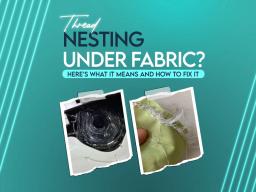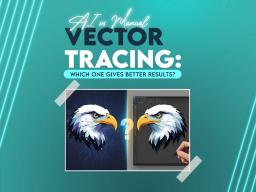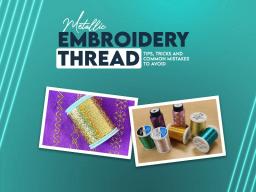
Embroidery is a beautiful and relaxing craft that allows you to create stunning designs with just a needle, thread, and fabric. To make the most out of your embroidery projects. It is essential to have the right embroidery supplies on hand. From the essentials to more specialized tools. The following ten embroidery supplies are must-haves for anyone looking to delve into this timeless craft. Whether you are a beginner or a professional embroiderer. Having these key items in your arsenal will help you create intricate, beautiful embroidery patterns with ease and precision.
In embroidery, there are a variety of thread colors and floss options to choose from. Silk thread is known for its lustrous sheen and smooth texture. Making it ideal for adding a luxurious touch to embroidery projects.
Rayon thread is popular for its vibrant and glossy finish, while Perle cotton thread is thicker and has a slightly textured appearance. Often used for adding dimension or creating more visible stitches. Metallic threads, as the name suggests, have a shiny and reflective quality, adding a touch of sparkle to embroidery designs.
For beginner embroidery projects, using floss thread is highly beneficial due to its versatility and ease of use. Floss is made of six individual strands that can be separated to create finer stitches or used together for more substantial coverage. A multi-pack of quality thread offers a range of colors and types. Allowing beginners to experiment and practice with different thread options without having to purchase individual spools. Thread gloss is a useful tool for embroidery, as it helps prevent tangling and fraying of threads while adding a subtle sheen to the finished stitches. It can also make threading needles easier and smoother. A recommended brand to try is Thread Heaven, known for its non-toxic and durable formula that helps preserve the quality of the thread and embroidery work.
The second thing that must be in embroidery supplies is fabric. The most commonly used fabric for embroidery is quilting cotton. Which is readily available in fabric stores and online shops. It is a versatile and durable fabric that comes in a wide range of colors and patterns. Making it perfect for embroidery projects. Another popular option is repurposed fabric. Which can include old clothes, linens, and even denim. These can be found at thrift stores, garage sales, and through online marketplaces.
Offering a sustainable and unique choice for embroidery projects. When it comes to applique projects, the preferred fabric choices are usually quilting cotton and other similar-weight fabrics. These fabrics provide the necessary structure and stability for applique designs. Ensuring that the finished piece looks neat and professional. Quilting cotton can be found in a variety of prints and solids. Making it easy to find the perfect fabric for any applique project. Additionally, fabric stores and online shops are reliable sources for purchasing these fabrics for your applique projects.
Embroidery needles come in various sizes and types to fit different embroidery projects. Sizes range from 70/10 to 90/14 and larger, with points like ballpoint, sharp, or universal. The universal size 75/11 is a great starting point for most embroidery projects. As it is versatile and can work with a variety of fabrics and threads. It's important to start with this size and fine-tune from there if needed to achieve the desired results.
Using a sampler pack of embroidery needles can help in finding the most comfortable size for hand embroidery. By trying out different sizes and types, embroiderers can determine which needle works best for their specific project and embroidery style. This allows for a more personalized and comfortable stitching experience, leading to better quality embroidery work. Overall, embroidery needles come in various sizes and types, starting with a universal size 75/11 and using a sampler pack. This can help in achieving the best results for hand embroidery projects.
The number four thing that must be in embroidery supplies is an embroidery hoop. When choosing the right size and shape of an embroidery hoop. It's important to consider the size of your project and your personal preference. For smaller projects or detailed work, a smaller hoop will be more suitable, while larger projects may require a larger hoop. The shape of the hoop can also vary, with options such as round, oval, or square hoops available.
Personal preference plays a big role in choosing the right shape. Some embroiderers may find certain shapes more comfortable to work with. Ultimately, the best hoop for you will depend on the specific needs of your project and your own comfort and preference.
To mount fabric into the embroidery hoop, start by loosening the screw join on the hoop. Place the inner hoop underneath the fabric and the outer hoop on top, ensuring the fabric is taut and centered. Gently tighten the screw join until the fabric is securely held in place, being careful not to stretch the fabric too tightly.
Using an embroidery hoop has several benefits, including keeping the fabric taut for even stitching and preventing puckering or warping of the fabric. These benefits can result in a neater and more professional-looking finished product. By choosing the right size and shape of the hoop and properly mounting the fabric. You can ensure a more enjoyable and successful embroidery experience.
There are several types of embroidery scissors available for use in various embroidery works. Double-curved embroidery scissors are designed with a unique shape that allows for cutting threads in hard-to-reach areas. Making them ideal for intricate embroidery and cross-stitch projects. Duckbill applique scissors feature a flat, wide blade with a narrow, pointed tip, perfect for trimming around delicate fabrics without causing damage. Embroidery snips are small, lightweight scissors with pointed tips, designed for precise and quick thread trimming.
Double-curved embroidery scissors are best used for cutting threads in tight or hard-to-reach areas, such as when doing embroidery or cross-stitch work. Duckbill applique scissors are useful for trimming applique pieces and working with delicate fabrics, preventing accidental snips and cuts. Embroidery snips are great for precise thread trimming and cutting in embroidery. Their small size and sharp tips make them easy to maneuver.
Double-curved embroidery scissors offer extended reach and improved visibility, making them perfect for intricate designs. Duckbill applique scissors allow for accurate cutting without damaging fabric. Embroidery snips are lightweight and portable, ideal for quick and precise thread trimming. Depending on the specific needs of the embroidery work. Each type of scissors offers unique features and benefits for a variety of projects.
Transfer tools are essential for transferring patterns onto fabric before starting a project. Fabric pens or pencils can be used to directly trace the pattern onto the fabric. Tracing paper can also be used by placing it between the pattern and fabric and tracing over the lines with a pencil. Another option is to use a transfer pen, which allows the pattern to be traced onto the fabric and then ironed to set the marks. It is important to consider the type of fabric being used when choosing a transfer tool. For lighter fabrics, a fabric pen or pencil may work best, while for darker fabrics, a transfer pen or tracing paper may be more visible.
After the pattern has been transferred, any marks can be removed using water. Making it easy to correct any mistakes. It is beneficial to use transfer tools that do not fade over time. Ensuring that the transferred pattern remains visible throughout the duration of the project.
The number seven thing that must be in embroidery supplies is the needle threader. Using a needle threader can make the task of threading a needle much easier. Especially when dealing with thick or splitting thread. To use a needle threader, start by pushing the metal diamond through the eye of the needle. Once the diamond is through the eye, pass the end of the thread through the diamond loop. Then, gently pull the diamond and thread it back through the eye of the needle. This method ensures that the thick or splitting thread is securely threaded onto the needle without frustrating attempts.
It's important to note that some needle threaders may not fit through needles with smaller eyes. So it's recommended to use needles in size 7 and upwards for a better fit. By following these steps and using the appropriate needle size. Threading a needle with a needle threader becomes an easier and more efficient task. Especially when dealing with thicker or splitting thread.
In the field of textile design, various patterns and designs are commonly used to create unique and visually appealing fabrics. Some of the most popular patterns include floral, geometric, and abstract designs. Floral patterns often feature intricate and delicate motifs inspired by nature, while geometric designs incorporate straight lines, shapes, and repetitive patterns to create a modern and structured look. Abstract designs, on the other hand, are more open to interpretation and often feature bold and unconventional motifs.
Examples of these patterns can be found in a wide range of textiles, from traditional Indian saris with elaborate floral designs to contemporary geometric prints used in home decor. The significance of these patterns lies in their ability to convey a specific theme or mood. Making them essential elements in the field of textile design.
The last important thing that must be in embroidery supplies is light. The key features of a light and comfortable chair include a sleek and modern design. Made from durable yet lightweight materials such as aluminum or high-quality plastic. The chair should also have adjustable features such as height and tilt. As well as cushioned seats and backrests for added comfort. The design should prioritize ventilation and support for the user's posture. With an emphasis on ergonomic principles to promote a relaxing seating experience.
These elements contribute to creating an ergonomic and relaxing seating experience by providing support and comfort to the user's body. The lightweight materials make the chair easy to move and adjust, enhancing versatility in different environments. The adjustable features allow for customization to the individual's preferences. Promoting better posture and reducing strain on the body. The design not only offers comfort but also promotes ventilation to prevent discomfort from prolonged sitting. Making it an ideal choice for a variety of settings. Ultimately, the combination of these features makes for a chair that offers both physical and mental relaxation, providing a comfortable and ergonomic seating experience for the user.
In conclusion, the art of embroidery becomes a delightful journey with the essential supplies highlighted above. From vibrant thread colors and versatile floss options to the importance of a well-chosen embroidery hoop and precision scissors, each tool contributes to creating beautiful, intricate designs. Don't forget the crucial role of transfer tools, needle threaders, and thoughtful pattern choices.
Nick William has been immersed in the world of embroidery digitizing for over 20 years, earning 25 industry awards throughout his career. As a 3rd generation embroidery expert, Nick’s journey started in his family’s workshop, where he learned the art of digitizing before the rise of modern software. He has worked with leading commercial embroidery businesses and has shared his expertise with over 75,000 home and professional embroiderers. As an author at True Digitizing, Nick is passionate about teaching others how to create beautiful, precise designs through easy-to-follow tutorials and expert advice.
Categories

3D Puff on Hats: How to Achieve the Perfect Raised Look
02-12-2025

Choosing the Right Stabilizer for Every Fabric Type: Complete Guide
01-12-2025

Embroidery Thread Weight Explained: 30wt vs 40wt vs 60wt
01-12-2025

Holiday Embroidery Trends | Top Designs for Thanksgiving through Christmas
27-11-2025

Thread Nesting Under Fabric? Here’s What it Means and How to Fix it
25-11-2025

Understanding DST, PES, and Other Embroidery File Formats | A Complete Guide
20-11-2025

Top 10 Vector File Formats Every Designer Should Know in 2026
14-11-2025

Polyester vs Rayon Embroidery Threads | Which One Should You Choose?
14-11-2025

AI vs Manual Vector Tracing: Which One Gives Better Results?
06-11-2025

Metallic Embroidery Thread | Tips, Tricks and Common Mistakes to Avoid
04-11-2025
Asked Questions





